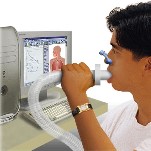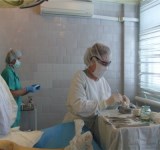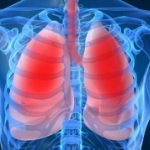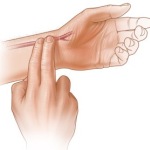 Help with pulmonary bleeding
Help with pulmonary bleeding

Emergency care for pulmonary bleeding should be provided immediately upon detection of this pathological condition. Pulmonary bleeding can occur if the patient has various non-specific processes in the lungs or bronchi - tuberculosis, malignant neoplasms, lung abscess, foreign bodies of the bronchi, chest injuries and others.
In itself, pulmonary bleeding is defined as the release of pure blood from the respiratory tract or an admixture of blood to sputum during coughing (hemoptysis) .
Hemoptysis is the production of sputum with an admixture of blood, which can be:
- mixed evenly ("rusty" sputum with croupous pneumonia);
- in the form of the so-called "raspberry jelly" for lung cancer;
- located in the sputum as separate veins.
Hemoptysis can also be a symptom of heart disease. In any case of the origin of hemoptysis, the patient needs immediate medical attention and careful nursing care. In particular, attention should be paid to patients in whom hemoptysis occurred for the first time.
Help with pulmonary bleeding and hemoptysis
We create complete physical and mental peace for the patient.
We urgently inform the attending physician or the doctor on duty about the case of hemoptysis or pulmonary hemorrhage. We ask the patient to lie on his stomach face down, remove the pillows.
We raise the foot end of the bed by 30-60 cm.
We tie the patient's head with a towel around the forehead, tie the ends of the towel to the back of the bed so that the head is on weight and breathing is not difficult. The patient's body will be located at an angle of 30-40º to the horizontal surface, legs above the head. To prevent slipping, the patient's legs can be fixed to the headboard.
In this position, the patient can be from 4 to 6 hours (at the discretion of the doctor). So the airways are easily released from the outflowing blood, this is facilitated by the diaphragm, which is in an elevated position. Blood will also not be able to get from neighboring bronchi and areas of the lungs.
If hemoptysis is of tuberculous origin, antitussive drugs are given to the patient only with an intense cough, which is aggravated by bleeding.
Of the medicinal hemostatic drugs, aminocaproic acid, dicynone (sodium etamsylate), vikasol are used. With incessant pulmonary bleeding, transfusion of hemostatic doses of donor blood is used.
With the ineffectiveness of the measures taken to stop pulmonary bleeding in patients with tuberculosis, pneumothorax is used to compress the lung.
Hemostatic drugs are prescribed in parallel with the treatment of the underlying disease, which caused the bleeding.
Nutrition of the patient during prolonged pulmonary bleeding: easily digestible, vitamin-rich food in semi-liquid form is prescribed in small portions.
Help with pulmonary bleeding involves constant monitoring of the patient's condition, his consciousness and indicators - pulse, blood pressure, respiratory rate. After stopping the bleeding, the patient should also be under the strict supervision of medical personnel.





